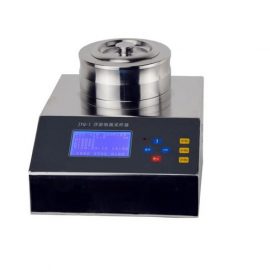Microbial Air Sampler: A Comprehensive Guide to Airborne Microorganism Detection

# Microbial Air Sampler: A Comprehensive Guide to Airborne Microorganism Detection
Microbial Air Sampler: A Comprehensive Guide to Airborne Microorganism Detection
Microbial air samplers are essential tools in environmental monitoring, healthcare, and industrial settings. These devices are designed to capture and quantify airborne microorganisms, providing critical data for assessing air quality and ensuring safety. This guide will explore the principles, types, and applications of microbial air samplers, helping you understand their importance and functionality.
What is a Microbial Air Sampler?
A microbial air sampler is a device used to collect and measure the concentration of airborne microorganisms, such as bacteria, fungi, and viruses. These samplers operate by drawing a known volume of air through a collection medium, which captures the microorganisms for subsequent analysis. The collected samples can then be cultured or analyzed using molecular techniques to identify and quantify the microorganisms present.
Types of Microbial Air Samplers
There are several types of microbial air samplers, each with its own unique mechanism and application. The most common types include:
- Impaction Samplers: These samplers use a high-velocity air stream to impact microorganisms onto a solid surface, such as an agar plate. The microorganisms are then cultured and counted.
- Filtration Samplers: These devices draw air through a filter that traps microorganisms. The filter can then be analyzed using various techniques, such as microscopy or PCR.
- Liquid Impingement Samplers: These samplers collect microorganisms in a liquid medium, which can then be analyzed for microbial content. This method is particularly useful for capturing viruses and other fragile microorganisms.
- Electrostatic Precipitators: These samplers use an electric field to charge and collect airborne particles, including microorganisms. The collected particles can then be analyzed using various methods.
Applications of Microbial Air Samplers
Microbial air samplers are used in a wide range of applications, including:
- Healthcare Facilities: Monitoring air quality in hospitals and clinics to prevent the spread of infections.
- Pharmaceutical Industry: Ensuring cleanroom environments are free from contaminants that could affect product quality.
- Food Industry: Monitoring air quality in food processing and packaging areas to prevent contamination.
- Environmental Monitoring: Assessing air quality in outdoor and indoor environments to detect potential health hazards.
- Research and Development: Studying the behavior and distribution of airborne microorganisms in various settings.
Choosing the Right Microbial Air Sampler
Selecting the appropriate microbial air sampler depends on several factors, including the type of microorganisms you wish to detect, the environment in which you will be sampling, and the specific requirements of your application. Consider the following when choosing a sampler:
- Sensitivity: Ensure the sampler can detect the microorganisms of interest at the required concentration levels.
- Flow Rate: Choose a sampler with an appropriate flow rate for your sampling needs.
- Collection Medium: Select a sampler that uses a collection medium suitable for your analysis method.
- Portability: Consider whether you need a portable sampler for field use or a stationary unit for laboratory settings.
- Ease of
Keyword: Microbial Air Sampler
